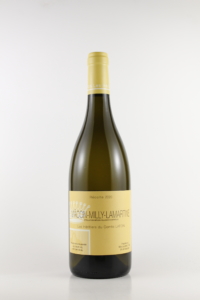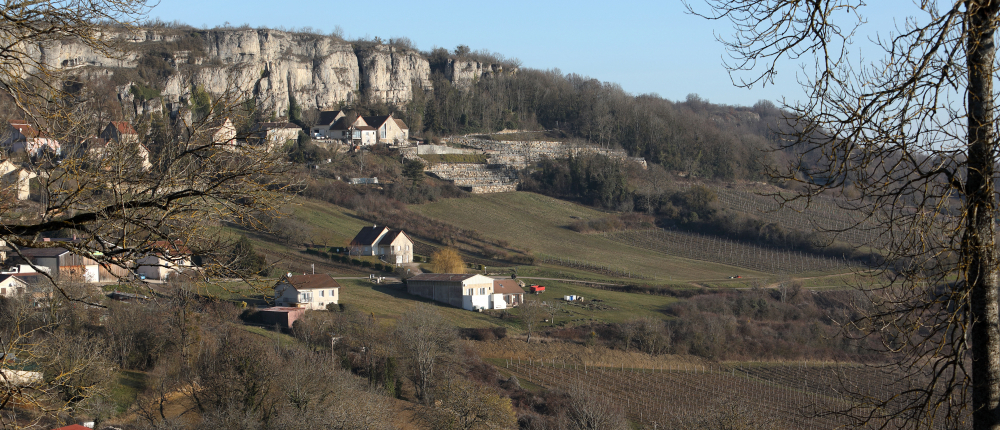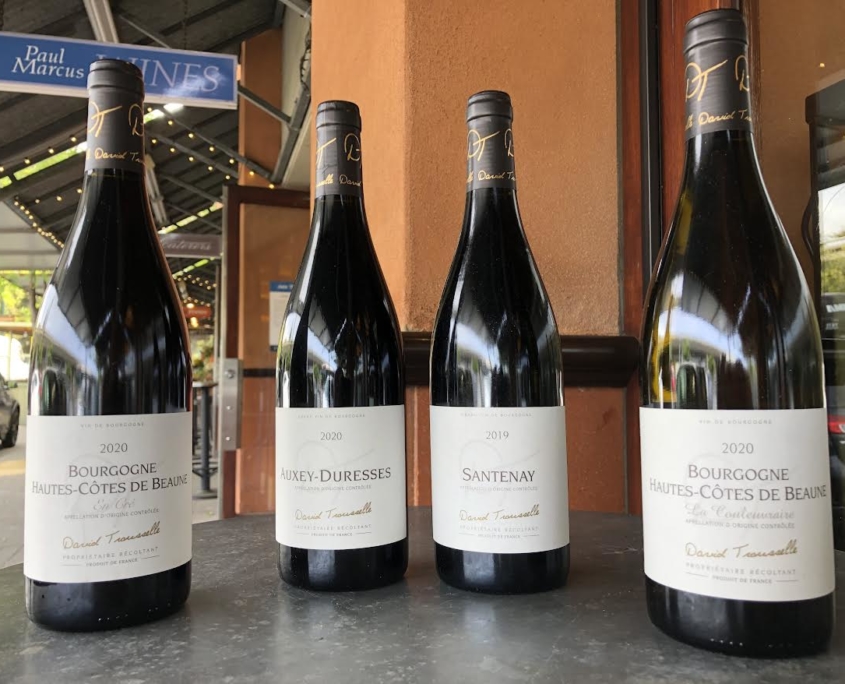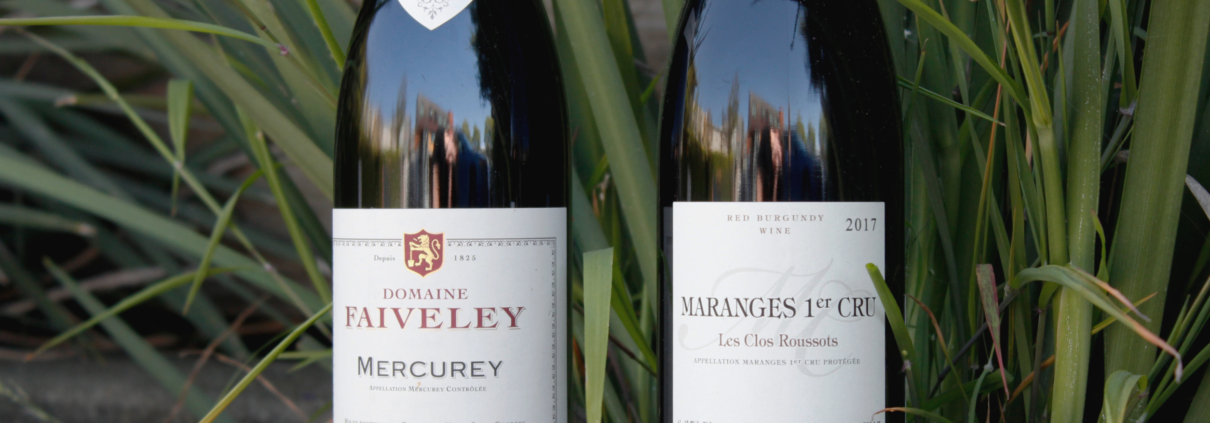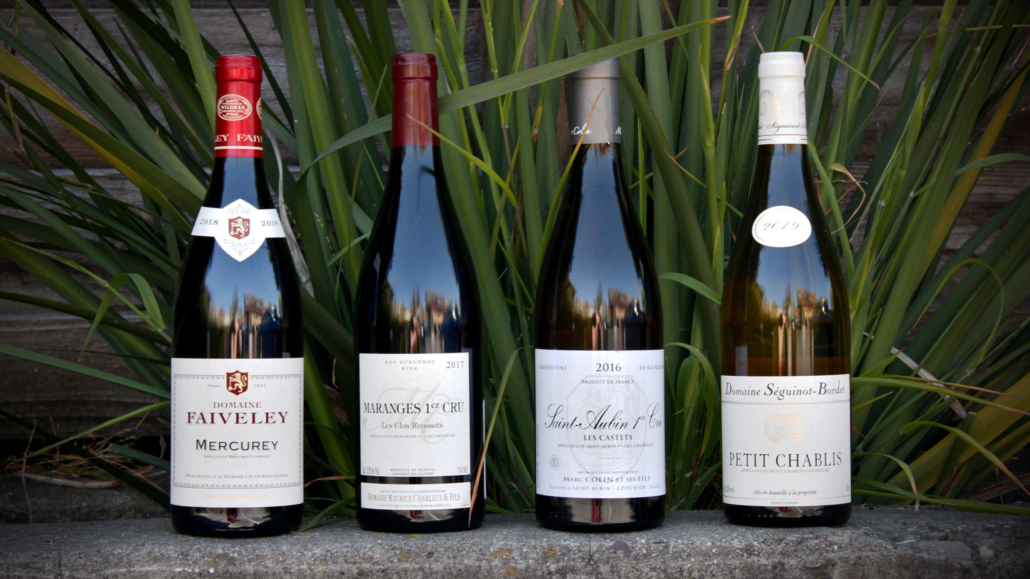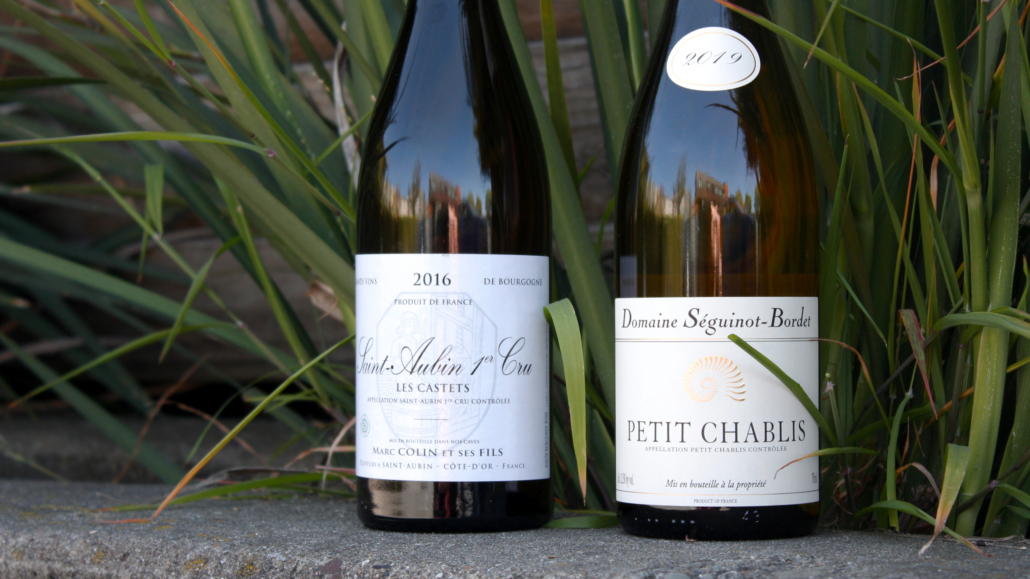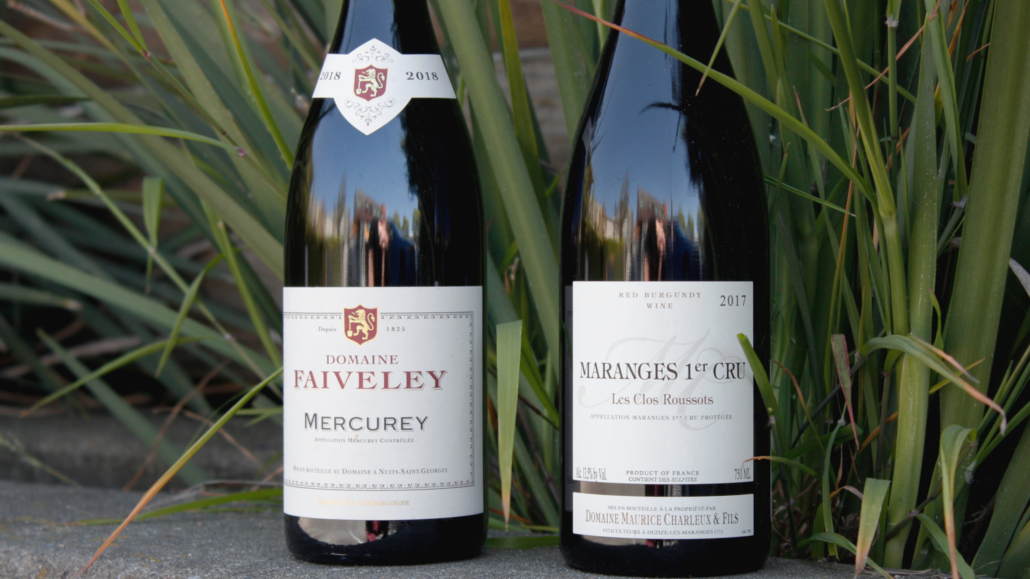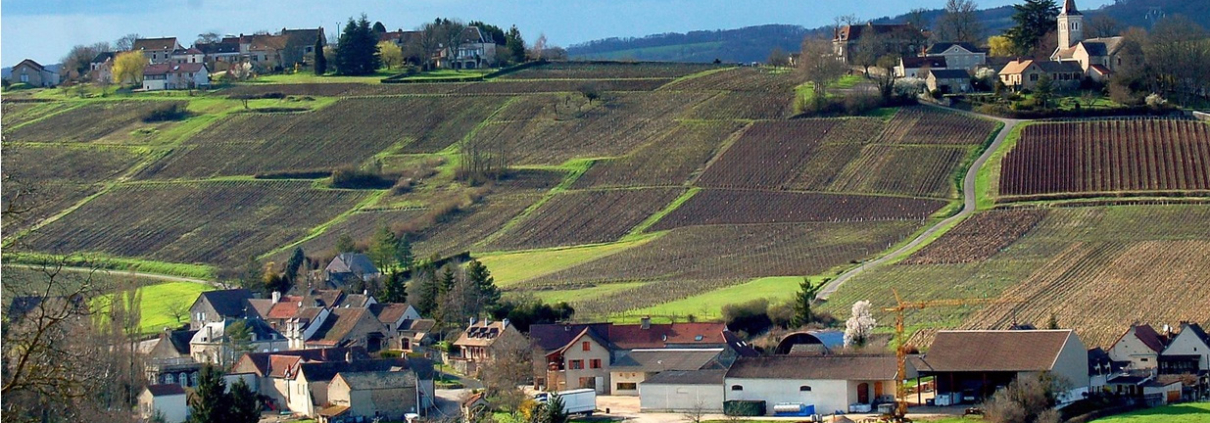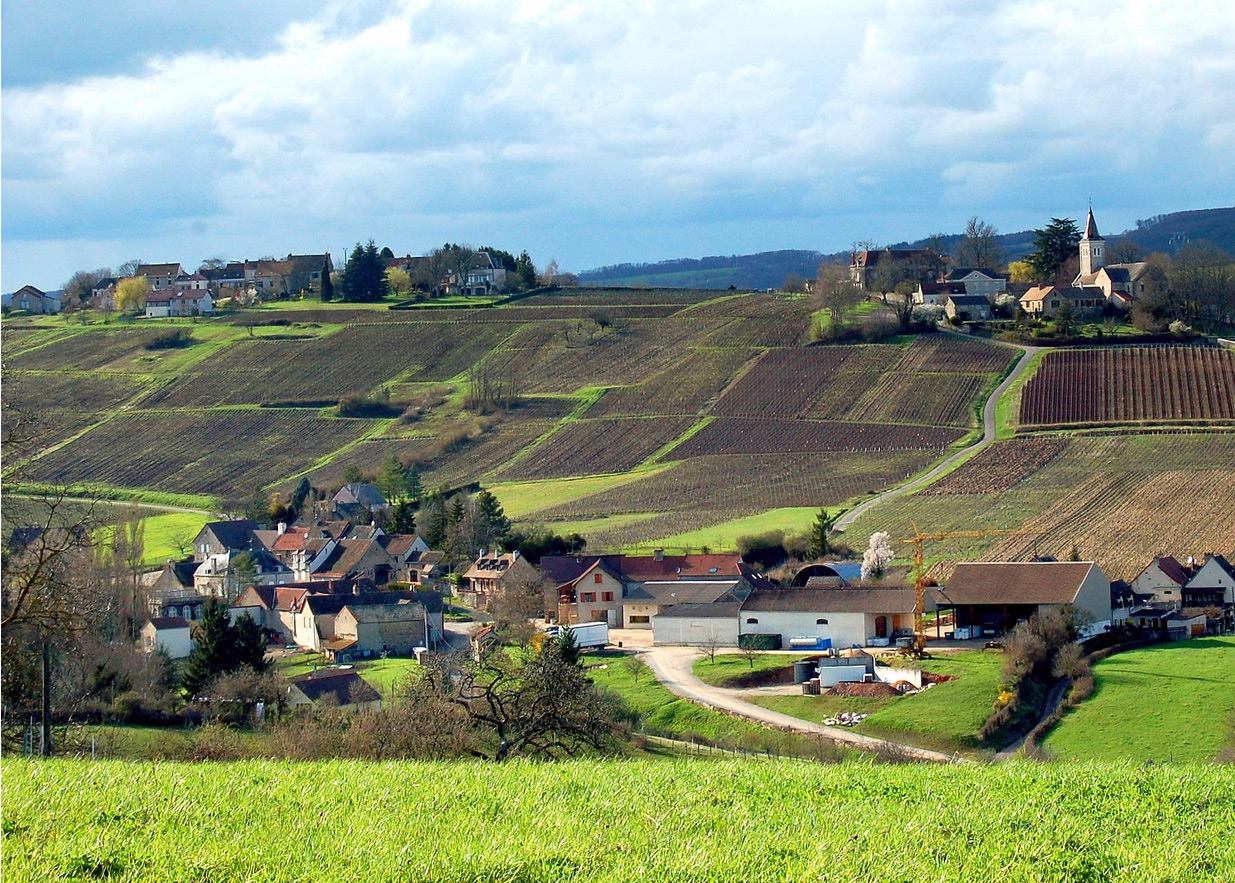As we always say here at Paul Marcus Wines, “wine is food.” To us, your choice of holiday wines is as important as anything else on the menu. (OK, fine, it’s much, much more important.) In past years, we’ve focused on Thanksgiving wines that are “outside the box” and “off the beaten path.” This year, we’re going to take the opposite approach–wines that are firmly in the T-day pocket–specifically, wines from Burgundy and Beaujolais.
There’s a reason why chardonnay, pinot noir, and gamay are perfect choices for the Thanksgiving table–their stylistic versatility allows them to pair well with a wide range of flavors. They are meant to complement, not dominate, the array of food before you.
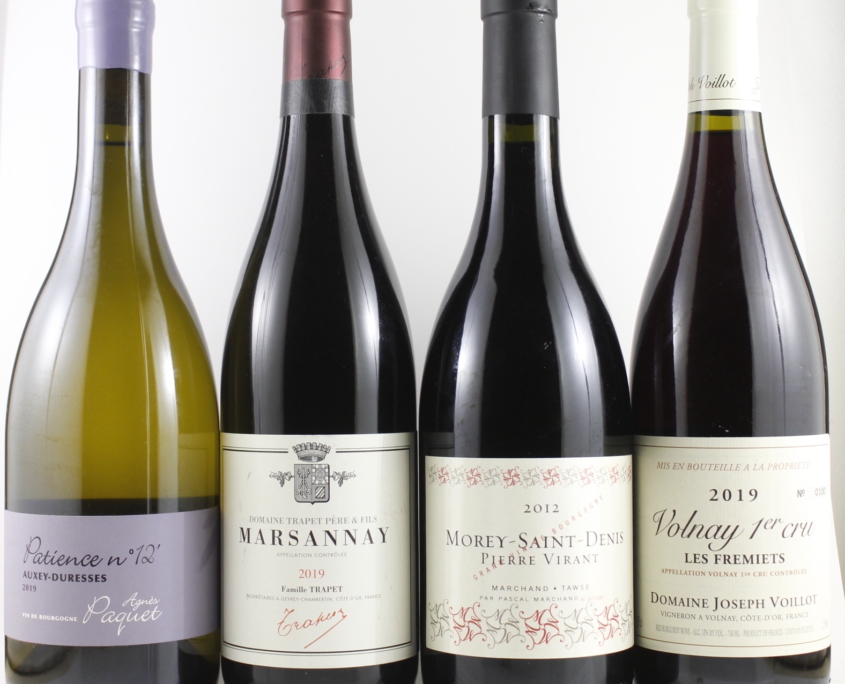
Stunners and Showstoppers (Sorry, Uncle Buck)
Aside from the usual bubbles we will share at our Thanksgiving table, my wife and I will start with a bottle or three of the 2020 Domaine Joseph Voillot Bourgogne Rouge Vieilles Vignes. The wine is so bright that it makes no difference if you serve it before your rosé or white wines; it has a bracing but friendly acidic spine with crunchy fall fruit. Notes of cranberry and raspberry swell over the palate. This is all old-vine pinot noir with depth and a surprising concentration that will accent a variety of dishes–and at $42, this is a financially feasible opening gambit. Oh yeah.
As we move forward, I will open a bottle of the 2017 Marchand-Tawse Gevrey-Chambertin ‘En Pallud.’ Round and rich but rippling with bright old-school acidity, this is a top-flight red Burgundy that is a showstopper every time I have it, and its $85 tag represents a great value for Burgundy.
For a white “pairing” with the Marchand-Tawse, we’ll turn to the truly great 2016 Comte Abbatucci Cuvee Collection ‘Diplomate d’Empire’–perhaps the pinnacle of white wine from Corsica. Dominated by the Corsican mainstay vermentinu, it also adds a mix of local grapes including biancu gentile, rossola bianca, brustiano, and genovese. Grown on granite soils, it is, like all of Abbatucci’s wines, very organic. (“Very?” you ask; the Count has musicians play occasional nocturnes to the vines in the red-brown, blue evenings.) Six years of bottle age allow the wine’s complexity to rise from the glass.
The Diplomate blanc is not for the faint of heart on any level. It is both subtle and powerful, intensely laid back and truly stunning. And at $91, I would suggest not rushing through it. It deserves time to breathe, and I’m definitely not too worried about Uncle Buck getting any of this very-limited gem!
To that end, I find it helpful to remind myself that not everyone at the table needs to get a glass of every wine that is opened. I also advise having a few bottles open at the same time, which gives people choices and helps manage the more expensive tastes at the table, so I would suggest having a bottle of Cava at the ready.
— Chad Arnold
When Playtime’s Over
I see two kinds of wine for T-day. Mostly, I serve any manner of fresh, fruity, lithe, low-alcohol wines–red, white, or rosé, it hardly matters. These are the joyful, playful, early-meal wines that keep the conversation light and bouncy. Amateurs and kids love ‘em.
But once the kids leave the table and the food and conversation slow, it’s time to go deeper. No shouting or boasting wine, but serious nonetheless–serious, yet graceful, because it’s been a long meal. The 2012 Marchand-Tawse Morey-Saint-Denis ‘Pierre Virant’ is all that. After 10 years, it’s composed and elegant and quietly insistent about its worth. It’s a wine that creates enough pause to allow you to consider how good things are.
— David Gibson
Burgundy and Beyond
A terrific white Burgundy from 90-year-old, organically farmed vines in a single terraced vineyard, the 2019 Agnès Paquet Auxey-Duresses ‘Patience No. 12’ has an explosively expressive nose of orchard fruits and deftly integrated oak. The palate is voluptuous without excess, with refreshing acidity and great depth and length.
To surprise your relatives, consider the 2017 Burg Ravensburg Pinot Noir ‘Sulzfeld’ from Baden, Germany. Most of your tablemates don’t know how much reputable pinot noir comes from Germany–and at great prices. The Burg Ravensburg is delicious pinot noir with some bottle age at an appealing price–organically and biodynamically farmed, old-school yet still elegant.
For high-end red “Burgundy,” the 2015 Georges Remy Bouzy Rouge Coteaux Champenois ‘Les Vaudayants’ is a true ringer. Coming from the village of Bouzy in Champagne, it’s an amazing, single-vineyard, still pinot noir that rivals great red Burgundy and yet comes from a place that almost no one knows makes still red wine–never mind world-class still red wine. Certified organic and biodynamic, this is perfumed, delicate, red-fruited pinot noir with great texture, finesse, and depth.
— Mark Middlebrook
Côte de Beaune Brilliance
There is little doubt that red Burgundy is the perfect complement to the Thanksgiving meal. The 2016 Domaine Tawse Volnay Premier Cru ‘Fremiets’ is textbook Volnay. The vineyard, which borders Pommard and shares similar limestone soils, is an early ripening vineyard. The farming is organic and biodynamic, and the wine is lovely. A bit forward, the mouthfeel is middleweight with complex details that express both the terroir and the winemaking. With a little earth and a lot of suppleness, it has a long, seamless finish.
Many of you are already familiar with the wines from Maranges’ Domaine Maurice Charleux et Fils. Maranges is located four kilometers southwest of Santenay in the Côte de Beaune, and vintage after vintage, the wines of this domaine have been overachievers. The 2020 Charleux Maranges Blanc falls right in line. It has deep notes of apple and pear, with a touch of Côte d’Or exotic fruit and a lovely beam of acidity that supports its rich fruit–an ideal white wine for the holiday table. Enjoy!
— Paul Marcus
 Souls Reaching Their Goal
Souls Reaching Their Goal
The remarkable success story of Agnès Paquet continues with her latest releases, including the 2020 Agnès Paquet Santenay Premier Cru ‘Les Gravières.’ Farming 13 hectares (about 31 acres) organically, using only indigenous yeasts, Paquet, the first in her family to make wine, is now known as one of the leaders in a new generation of excellent young producers in Burgundy. And I will add that the outstanding price-to-quality relationship of her wines is a true rarity in the region.
This beauty is a little richer, darker color than you might expect, plush on the palate with nice red cherry fruit and a hint of licorice. It will be able to handle all of those diverse Thanksgiving flavors and will truly shine with dark-meat turkey (and if the white meat is dry and boring, have a sip of this wine and you won’t care).
I am breaking the rules by including an Italian wine with all of the Beaujolais and Burgundy–hey, I am the Italian buyer after all–but the 2021 Torre dei Beati Cerasuolo d’Abruzzo ‘Rosa-ae’ is just too perfect to leave out. The name Torre dei Beati (“tower of the blessed “) derives from a 14th century fresco in a local church that tells a story of souls reaching their goal through hard work and many tests. This organically farmed estate chose the name because they embrace the same philosophy in their winemaking.
Cerasuolo d’Abruzzo is perhaps most easily described as somewhere between a light red and a more full or serious rosé, and it’s best served cool but not ice cold. The 2021 Torre dei Beati is a great example of these unique wines. It is vibrant with red berry “frutti di bosco” (like a light red) and is lifted by a pleasant stony, mineral zip (like a good rosé). This is an easy-drinking, delicious, and refreshing accompaniment to the Thanksgiving meal.
— Joel Mullennix
Long and Tall
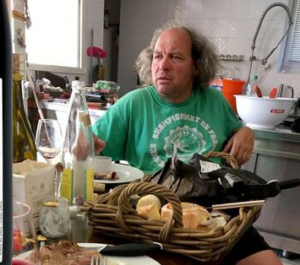
Georges Descombes
While you’re sweating it out in the kitchen chopping jalapeños for your cranberry sauce or mincing onions for your gravy base, throw a chill on the 2020 Georges Descombes Régnié. Made from 100 percent gamay grown on granite soils, it’s the kind of wine that brings brightness and lift from its shorter maceration time and partial carbonic-fermentation period. At $30, this is my kind of Beaujolais: long and tall and purely, utterly tasty.
On the other hand, the 2019 Joseph Voillot Volnay Premier Cru ‘Les Fremiets’ ($100) is more contemplative for sure–definitely the kind of wine you’ll want to sit with for a while. A cornucopia of red fruits, orange peel, and spice drawer, all wound together around a tight core of limestone minerality, Voillot’s Volnays offer such clarity in these times of uncertainty. How can you resist?
— Jason Seely
My Kind of Jam
Tasting my way through Paul Marcus Wines’ extensive Beaujolais selection, I’ve learned so much about gamay and its wide range of expressions: from incredibly light and fresh to medium-bodied and darker-fruited. Unless you’re familiar with the producer’s tendencies, you won’t quite know what you’re in for. The 2021 Domaine Chardigny Beaujolais-Leynes was a surprise for me. I didn’t have unreasonably high expectations for it at $27 a bottle, but upon opening it, I could tell even just by the nose that it was my kind of jam.
This wine strikes right down the middle of the gamay extremes. The notes of ripe cranberry and juicy pomegranate give the wine some flesh, while the immediately apparent peppery note and tangy finish counter what could otherwise be an overly fruity wine. (That tangy finish is most welcome in the face of what is to be a heavy, buttery Thanksgiving meal.) It is a great starter wine for those diehard red wine drinkers that refuse bubbles and whites, but don’t be surprised if you find yourself sipping on it throughout the entire evening–it will keep you salivating and ready for the next bite.
While $99 is certainly not the price of an everyday wine, the 2012 Marchand-Tawse Morey-Saint-Denis ‘Pierre Virant’ sure feels like a steal. This producer consistently delivers above its price point, and the 2012 confirms what we knew all along–they just don’t disappoint. Notes of mushroom and forest floor immediately upon opening give way to dried red cherries and the teeniest, tiniest hint of smoky flint. The acid is still fresh and persistent, making the wine quite light on its feet despite packing in so many flavors. The tannins are soft, but present at the finish. If mushrooms or black truffles make an appearance at your Thanksgiving spread, this is a must-have pairing. If not, try it with hard aged cheeses and gravy-soaked turkey … or even better yet, turducken.
— Emilia Aiello
Which Is the Splurge? Which Is the Value Play?
Recently, I’ve been rather delighted by the wines coming out of Marsannay. If you’re looking for value, Marsannay, the northern gateway to Burgundy, consistently delivers wines of quality and character that tend to be approachable in their youth. While they don’t have quite the power or complexity (not to mention the cache) of its Côte de Nuits neighbors, Marsannay wines are accessible and food-friendly, with deep, meaty fruit and ample acidity thanks to its combination of limestone and clay soils.
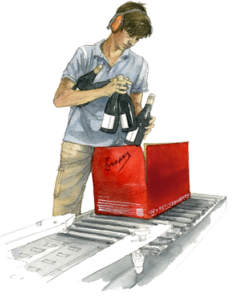
Jean-Louis Trapet
The 2019 Trapet Marsannay Rouge, at $55, is a relative Burgundy bargain. Aromatic and downy, with a dense heart of red and black fruit that’s tempered by its boost of acidity, this wine can certainly hold its own at the feast. It delivers classic Burgundy characteristics–without the triple-digit price point.
It wasn’t too long ago that you couldn’t find Beaujolais for more than 30 bucks, and shelling out almost 50 bucks for gamay was considered almost obscene–yes, times have changed. Yet Beaujolais is home to some of the world’s most distinguished and talented producers, and the region’s most accomplished winemakers take a backseat to no one.
The 2020 Yann Bertrand Fleurie ‘Chaos Suprême Olivia’ (named for Yann’s daughter) comes from old vines (some more than 100 years old) grown on pink granitic soil in the Grand Pré vineyard. A multifarious wine of refinement and distinction, it’s floral, bright, and supremely balanced–graceful and precise, but not without depth and structure. Naturally vinified without any additional SO2, this is undoubtedly worth the $48 splurge it will cost you to delight your guests.
— Marc Greilsamer
At Paul Marcus Wines, we never run out of ideas for your holiday table. Stop by the shop, and we’ll be happy to share them. Happy holidays, and thank you for your patronage.

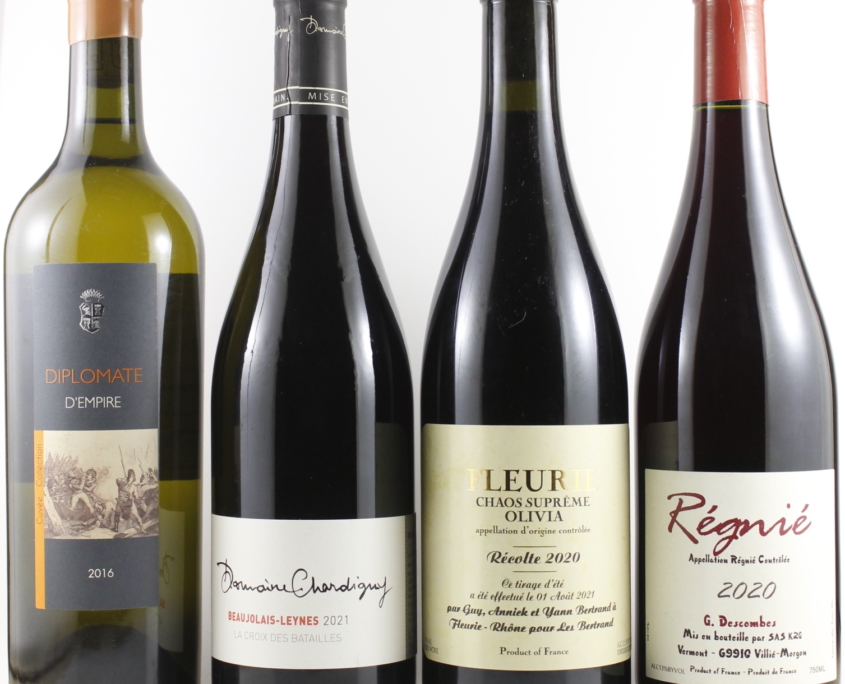 Souls Reaching Their Goal
Souls Reaching Their Goal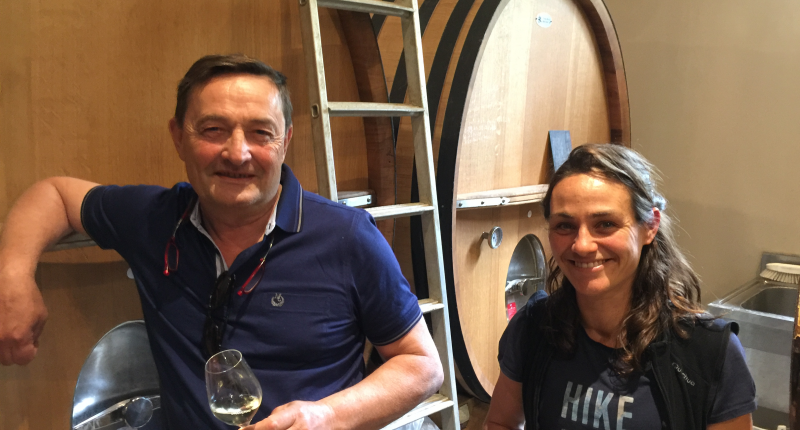 Perhaps more than anyone, Lafon, along with longtime winemaker Caroline Gon, helped restore and resuscitate the reputation of Mâcon chardonnay. Once known more as a consolation prize for those who couldn’t afford “real” Burgundy, the Mâconnais today produces wines of prestige and pedigree while still offering great opportunities for the value-driven consumer. Look no further than the wines of Les Héritiers du Comte Lafon, which Dominique Lafon founded in 1999.
Perhaps more than anyone, Lafon, along with longtime winemaker Caroline Gon, helped restore and resuscitate the reputation of Mâcon chardonnay. Once known more as a consolation prize for those who couldn’t afford “real” Burgundy, the Mâconnais today produces wines of prestige and pedigree while still offering great opportunities for the value-driven consumer. Look no further than the wines of Les Héritiers du Comte Lafon, which Dominique Lafon founded in 1999.